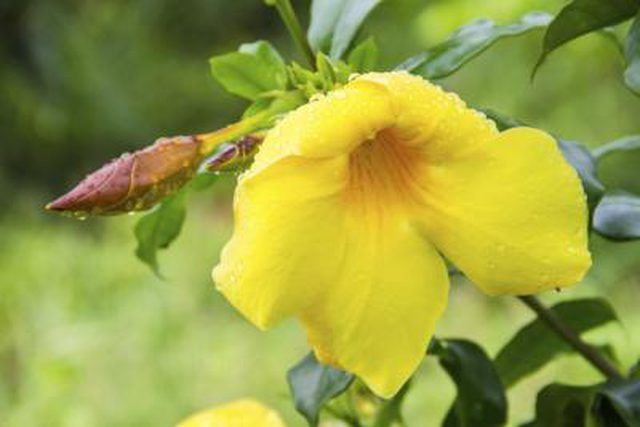Bulbs
Flower Basics
Flower Beds & Specialty Gardens
Flower Garden
Garden Furniture
Garden Gnomes
Garden Seeds
Garden Sheds
Garden Statues
Garden Tools & Supplies
Gardening Basics
Green & Organic
Groundcovers & Vines
Growing Annuals
Growing Basil
Growing Beans
Growing Berries
Growing Blueberries
Growing Cactus
Growing Corn
Growing Cotton
Growing Edibles
Growing Flowers
Growing Garlic
Growing Grapes
Growing Grass
Growing Herbs
Growing Jasmine
Growing Mint
Growing Mushrooms
Orchids
Growing Peanuts
Growing Perennials
Growing Plants
Growing Rosemary
Growing Roses
Growing Strawberries
Growing Sunflowers
Growing Thyme
Growing Tomatoes
Growing Tulips
Growing Vegetables
Herb Basics
Herb Garden
Indoor Growing
Landscaping Basics
Landscaping Patios
Landscaping Plants
Landscaping Shrubs
Landscaping Trees
Landscaping Walks & Pathways
Lawn Basics
Lawn Maintenance
Lawn Mowers
Lawn Ornaments
Lawn Planting
Lawn Tools
Outdoor Growing
Overall Landscape Planning
Pests, Weeds & Problems
Plant Basics
Rock Garden
Rose Garden
Shrubs
Soil
Specialty Gardens
Trees
Vegetable Garden
Yard Maintenance
Description of the Yellow Bell Flower
Description of the Yellow Bell Flower. Allamanda, also known as the yellow bell flower or the golden trumpet, is a tropical shrub or vine. The plant is native to Brazil and has rich green foliage and bright yellow blooms. Vines are extremely sensitive to inappropriate growing conditions and require specific care to thrive. The Allamanda is not to...
Allamanda, also known as the yellow bell flower or the golden trumpet, is a tropical shrub or vine. The plant is native to Brazil and has rich green foliage and bright yellow blooms. Vines are extremely sensitive to inappropriate growing conditions and require specific care to thrive. The Allamanda is not to be confused with Tecoma stans or the Fritillaria pudica, which are referred to commonly as "yellowbells."
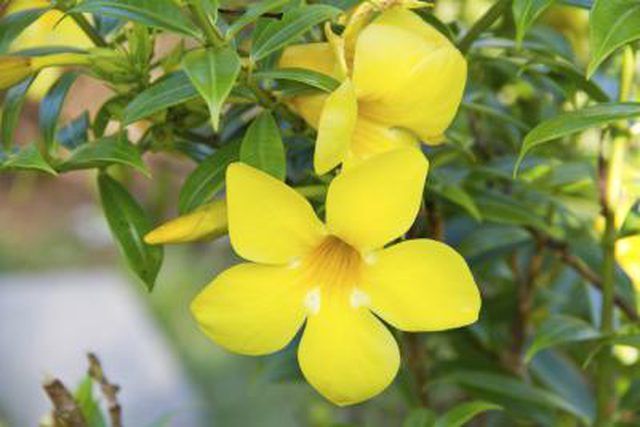
The bright yellow flowers on the Allamanda vine have overlapping petals that create a trumpet shape, and can have a diameter of up to 5 inches. Flowers come into bloom in groups of two or three which come from the tip of stem growth.
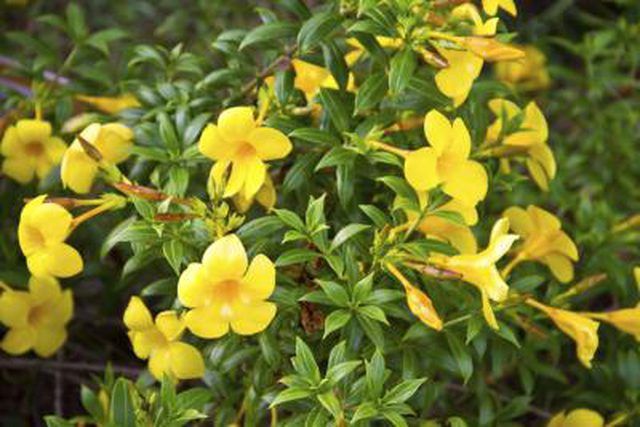
Yellow bell flowers have evergreen foliage, which means the leaves will remain green, even during the dormant seasons. Leaf blades are whorled and grow to a length between 4 and 8 inches. The plant also puts on prickly green seed pods which blend in and look like a second kind of foliage.
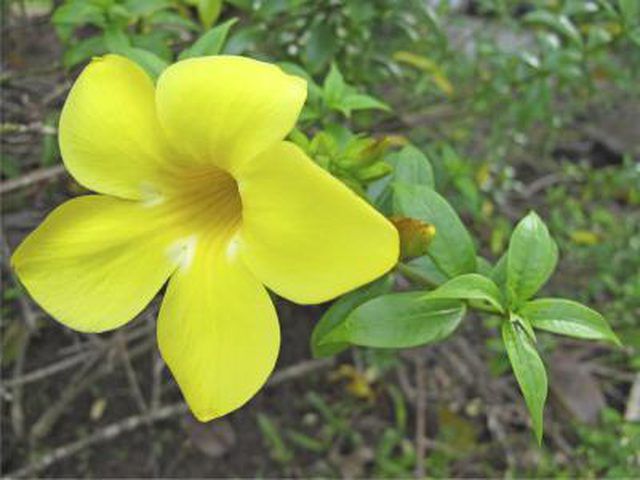
The vine can grow to a length of 50 feet. It is, however, commonly pruned to form a short flowering shrub. The plant is a rapid grower and will quickly vine through a trellis, or across a wall. It will also cascade over the sides of a hanging basket. Vines that stem out and detract from the shape can be pinched off, but over pinching will limit new growth and bloom.
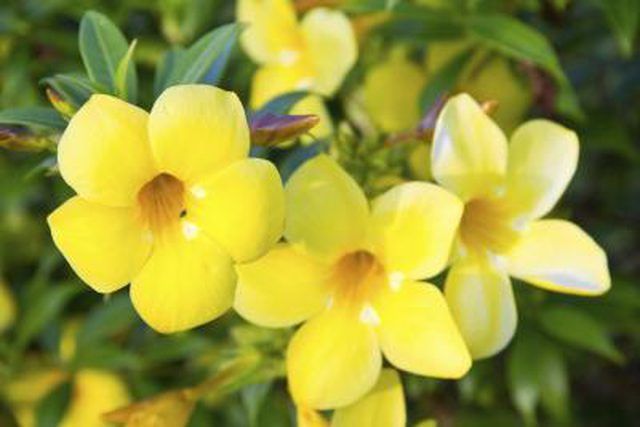
These plants prefer a rich humus soil, which is kept moist. They have no tolerance for frost or salt, and cannot be planted outdoors in areas where these are a concern. They should be placed in a location where they receive full sun most of the day. Plants should be placed 36 to 60 inches apart to allow room for growth, and trimmed as a shrub, or given a surface from which to vine.
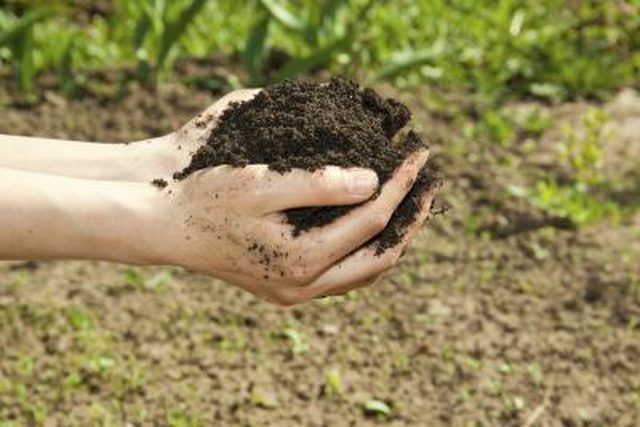
The Allamanda has been used by herbalists to treat a number of conditions including jaundice, malaria and constipation. It has also proven to have antibiotic properties effective against staphylococcus.
